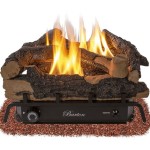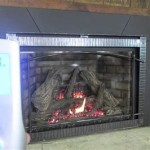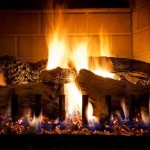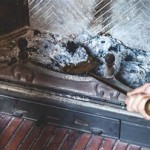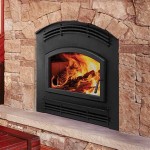Exploring the Comfort and Considerations of Tents with Fireplaces
The allure of camping often stems from a desire to connect with nature, disconnecting from the technological demands of modern life. However, for some, the prospect of cold nights and limited comfort can be a deterrent. Tents with fireplaces offer a compelling solution, blending the immersive experience of outdoor living with the warmth and ambiance typically associated with indoor spaces. These specialized shelters aim to extend the camping season and provide a unique, luxurious experience for those seeking a more comfortable and climate-controlled environment in the wilderness.
Tents designed to accommodate fireplaces are not simply standard tents with a hole cut for a chimney. They incorporate specific design features and materials to ensure safety and functionality. These features often include fire-resistant fabrics, stove jacks (openings specifically designed for stovepipes), and robust ventilation systems. Understanding these features is crucial for anyone considering investing in a tent with a fireplace.
Key Point 1: Understanding the Design and Materials
The primary distinction between a standard tent and a tent with a fireplace lies in its construction. The tent material itself is often treated with fire retardants or constructed from inherently fire-resistant materials, such as canvas. Canvas tents, known for their durability and breathability, are a common choice for those planning to use a wood-burning stove inside. However, synthetic materials are also used, provided they meet stringent fire safety standards.
A critical component is the stove jack, a reinforced opening in the tent wall or roof designed to accommodate the stovepipe. This area is typically made of a heat-resistant material, such as fiberglass or silicone-coated fabric, to prevent the tent material from melting or catching fire due to the high temperatures emanating from the stovepipe. The size and placement of the stove jack are important considerations, as they must be compatible with the user’s chosen stove model.
Ventilation is another crucial design aspect. Proper airflow is essential for efficient combustion within the stove and to prevent the buildup of carbon monoxide, a potentially lethal gas. Tents with fireplaces typically feature multiple vents strategically placed to promote air circulation, ensuring a continuous supply of fresh air and the removal of exhaust gases.
Key Point 2: Safety Considerations and Best Practices
Operating a wood-burning stove inside a tent inherently carries safety risks. Carbon monoxide poisoning is a significant concern, making the use of a carbon monoxide detector absolutely essential. This device should be placed inside the tent, near sleeping areas, and its batteries should be regularly checked. Furthermore, ensuring proper ventilation is paramount in minimizing the risk of carbon monoxide buildup.
Fire safety is another critical aspect. Maintaining a safe distance between the stove and any flammable materials is vital. This includes bedding, clothing, and tent walls. A fire-resistant mat should be placed under the stove to protect the tent floor from embers or sparks. Regular inspection of the stovepipe for leaks or damage is also essential.
Proper installation of the stove and stovepipe is crucial. The stovepipe should be securely connected to the stove and the stove jack, and it should extend sufficiently high enough outside the tent to ensure proper draft and prevent sparks from landing on the tent material. It's recommended to perform a test run of the stove outside the tent before using it inside to ensure it is functioning correctly and that there are no leaks or other issues.
Constant vigilance is required when operating a stove inside a tent. The stove should never be left unattended while burning, and it should be completely extinguished before going to sleep or leaving the campsite. Children and pets should be kept away from the stove at all times.
Key Point 3: Selecting the Right Tent and Stove Combination
Choosing the appropriate tent and stove combination requires careful consideration of several factors, including tent size, stove size, and intended use. The size of the tent should be proportional to the size of the stove to ensure adequate heating without overheating the space. Overly large stoves can create an uncomfortable environment, while undersized stoves may not provide sufficient warmth in colder conditions.
The type of stove is also an important consideration. Wood-burning stoves are the most common choice, but propane stoves and electric heaters are also options, although the latter requires access to a power source. Wood-burning stoves offer the benefit of using readily available fuel in many camping locations, but they require more maintenance and attention than other types of heaters.
The intended use of the tent will also influence the selection process. For example, a tent designed for winter camping will typically be constructed from heavier, more insulated materials than a tent intended for use in milder weather. The features and design of the tent should align with the specific environmental conditions and activities planned for the camping trip.
Researching different tent and stove models and reading reviews from other users can provide valuable insights into their performance and reliability. It is also advisable to consult with experienced campers or outdoor gear retailers to obtain expert advice on selecting the right combination for specific needs and preferences. Furthermore, practicing setting up the tent and stove at home before embarking on a camping trip is highly recommended to familiarize oneself with the equipment and ensure a smooth and safe setup in the field.
Ultimately, selecting a tent with a fireplace requires a thorough understanding of the equipment, a commitment to safety, and careful planning. By prioritizing these aspects, campers can enjoy the warmth and comfort of a fireplace in the wilderness, creating a memorable and enriching outdoor experience.

Orland Glamping Stove Bell Tent Breathe Tents
Is It Safe To Use A Wood Burning Stove In Tent Quora

Hot Tents And Tent Stoves For Pomoly

Orland Tent Stove Camp Stoves Glamping Canvascamp

Camping Wall Tent With Stove Jack Spacious Versatile Ubuy

Dweller Tent Stove Camping Fireplace For Hot Wood Burning

Ultralight Titanium Hot Tent Stove For Camping Firehiking Wood

Fireproof Stove Mat Montana Canvas

17 Best Tents With Stove Jack For All Seasons Family Camp

Bushmaster Camping Stove Yurts Shepherd Huts Garden
Related Posts


